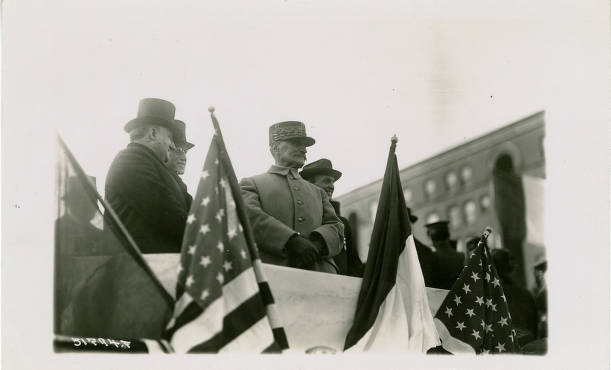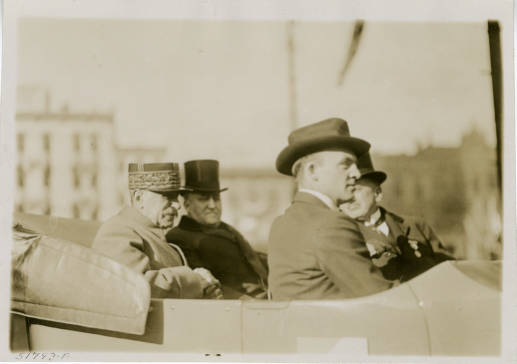Marshal Ferdinand Foch, commander-in-chief on the western front during World War I, toured the United States in 1921 as a guest of the . Leadership from Indianapolis, Marion County, and Indiana jointly planned for the visit, in cooperation with the American Legion. Legion and National Guard units from across the state participated, and Governor Warren McCray invited dignitaries from across the nation.

Foch’s special train arrived at Union Station at 9 A.M. Governor McCray and Mayor spoke, and the marshal responded through an interpreter. The official reception committee and 200 citizens greeted him while thousands waited outside. The day’s events began with a reception at the and included a 25-mile race at the , the governor’s luncheon at the Indianapolis Country Club, a mammoth parade, the dedication of the cornerstone of the planned , a brief visit to the American Legion National Headquarters, and a banquet at the Claypool. Foch also planted a tree at the Indianapolis Country Club.
A mass meeting at climaxed the day’s events, with 12,000 seated and 2,000 standing. Foch returned to Union Station at 9 P.M., where a crowd again waited to catch a glimpse of him, and he then departed the city.

Surviving mementos of Marshal Foch Day include a stone salvaged from a destroyed bridge over the Marne, dedicated on that day as the cornerstone of the future War Memorial, and a 16th-century pillar from the Belleau Cathedral that was used as an altar during the cornerstone dedication. Both may be seen at the American Legion Museum. The actual cornerstone of the Indiana War Memorial was laid by General John J. Pershing in 1927.

Help improve this entry
Contribute information, offer corrections, suggest images.
You can also recommend new entries related to this topic.

